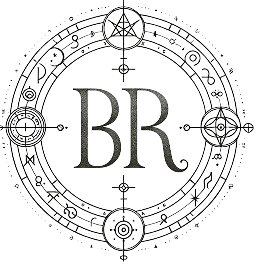
What is Symbolism?
Symbolism is a compelling tool in various forms of art and communication, where symbols are used to represent ideas and qualities by giving them symbolic meanings that are different from their literal sense. This can be seen in various domains, from literature and cinema to everyday language and even in the world of flowers, like the gladioli.
Symbolism in Literature
In literature, symbolism is a prominent device where objects, characters, or colors are used to represent deeper meanings. Symbolism in literature often transcends the literal interpretation of a text, offering readers a chance to delve deeper into the narrative’s thematic essence. Classic examples include the green light in F. Scott Fitzgerald’s “The Great Gatsby,” symbolizing Gatsby’s unattainable dreams, or the white whale in Herman Melville’s “Moby Dick,” representing the elusive nature of truth.
Symbolism Examples in Everyday Language
Symbolism isn’t confined to artistic expressions; it’s also prevalent in our daily communication. Phrases like “a heart of stone” symbolize a lack of empathy, and “a ray of sunshine” may represent happiness or optimism. These symbolic uses of language help convey complex ideas and emotions efficiently and poetically.
Symbolism in Cinema
Cinema, as a visual storytelling medium, offers a fertile ground for symbolism. Directors and cinematographers use visual cues like colors, settings, or objects to symbolize broader themes. For instance, the recurring motifs of birds in Alfred Hitchcock’s “The Birds” symbolize various thematic elements like freedom and chaos. Symbolism in cinema engages the viewer on a deeper level, encouraging them to uncover underlying messages.
Figurative Language and Symbolism
Symbolism is a key component of figurative language, which involves using words or expressions with meanings different from their literal interpretation. Metaphors, similes, and personification are all forms of figurative language that heavily rely on symbolism. For example, describing time as a “thief” is a metaphorical use of symbolism, suggesting that time stealthily takes away life’s moments.
Meaning and Symbolism of Gladioli

Even in the floral world, symbolism is abundant. Take gladioli, for instance. These striking flowers symbolize strength and integrity but can also represent infatuation, telling the recipient that they “pierce the heart” of the giver. The gladiolus, with its sword-like appearance, embodies the idea of moral integrity and strength.
Symbolism can be used in various ways in real life to convey deeper meanings or represent ideas, beliefs, and emotions. Here are a few examples:
National Flags: A country’s flag is a powerful symbol, representing the nation’s identity, history, and values. For instance, the stars on the flag of the United States symbolize the 50 states, while the stripes represent the original 13 colonies.

Religious Symbols: Symbols like the cross in Christianity, the Star of David in Judaism, or the crescent moon and star in Islam, are deeply significant, representing key aspects of these faiths and their teachings.
Corporate Logos: Companies use logos as a form of symbolism to convey their brand’s identity and values. For example, the apple in Apple Inc.’s logo can symbolize knowledge and innovation.
Traffic Signs: These are everyday examples of symbolism. A red octagonal sign symbolizes ‘stop’, while a green light means ‘go’. These symbols are universally understood and guide behavior on the road.
Wedding Rings: In many cultures, the exchange of rings during a wedding ceremony is symbolic. The ring, a circle with no beginning or end, can represent eternal love and commitment.
Color Symbolism: Different cultures assign various meanings to colors. For example, white is often associated with purity and peace in Western cultures, while in some Eastern cultures, it may be associated with mourning.
Animal Symbolism: Certain animals are often used symbolically. For example, an owl can symbolize wisdom, a lion courage, and a dove peace.
These are just a few examples, but symbolism permeates many aspects of everyday life, often conveying complex ideas and emotions in a simple, universal language.


